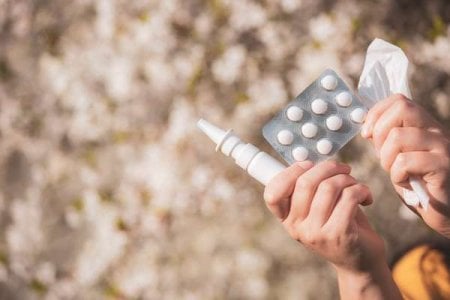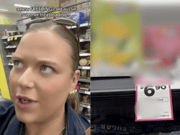Beat hay fever this allergy season with these top-rated remedies!
Disclaimer: This article should not be considered medical advice. Please consult a healthcare professional before taking medications or making changes related to your health.
We know how loved by many spring is in Australia: After all, the balmy days and sultry evenings combined with all those beautiful blooms in the air are comfort to the soul.
But sadly, as we go merrily into the new season, one in five among us is also welcoming the uncomfortable symptoms of hay fever (or allergic rhinitis) that often accompany the warmer months.
We’re talking itchy, watery eyes, stuffy and congested noses, and those awful bouts of sneezing that just won't quit.
Hay fever is triggered by an allergen—found in tree, grass, or weed pollens, dust mites, or mould—when it enters our noses and eyes, an alarm goes off in the body, and the immune system fires off its defence against what it perceives as a ‘foreign invader.’
This then leads to the release of histamine and other inflammatory chemicals that cause the associated symptoms.
But don’t fret! Below are several treatments that many experts believe can help reduce the irritation and even prevent hay fever from ever setting in in the first place.
Antihistamines
Antihistamines block histamine from binding to itself in the body, reducing symptoms and preventing it from becoming aggravated in the future.
For Aussies, there are two types: the older, sedating antihistamines (introduced in the 1940s) and the newer, less-sedating kind (which first hit the shelves in the 1980s).
For those who suffer from hay fever specifically, it’s best to go with the less-sedating variety, as it won’t make you drowsy.
Usually, antihistamines are taken orally as a tablet or solution; however, you may opt for the topical nasal spray variant or, in some cases, the eye drops specifically designed to help with the symptoms.
A person’s response to antihistamines varies, which is why someone needs to try different types of the drug to see which one works best.
Steroid Nasal Sprays
If you find that taking the antihistamines doesn't give you the serenity you desire, you should talk to your medical professional about the next solution: steroid nasal sprays.
These come with a potent combination of medications designed to reduce the release of inflammatory chemicals, which in turn minimises the ‘strength’ of hay fever.
The corticosteroids found in these nasal sprays have a different mechanism than antihistamines. According to research, corticosteroid nasal sprays are more effective in treating an itchy, runny and congested nose.
There are also nasal sprays with both antihistamines and corticosteroids in the market.
Sodium Cromoglycate
This is a type of mast-cell stabiliser, one that prevents mast cells from breaking down and, in effect, releases histamine and other chemicals that cause inflation.
Mast cells serve as sentinels that respond to pathogens and send signals to other tissues to modulate immune responses.
As such, the eye drop solution can be taken as a preventative treatment before the allergies strike. There is evidence that proves its effectiveness in its effectiveness in treating allergic conjunctivitis (eye inflammation from allergies).
Decongestants
Decongestants work by constricting your blood vessels, which should reduce redness in the eye area and stop the nose from running. You can take them orally, use the nasal sprays, or get eye drops administered directly to the area for best results.
That said, you should never use decongestants for longer than five days as they can backfire and cause a severe stuffy nose known as 'rebound congestion.'
However, a panel of experts in the US has proven that phenylephrine, a popular decongestant, does not relieve congestion when taken orally. The Therapeutic Goods Administration (TGA) in Australia is ‘monitoring’ developments and said they will ‘take action as required'.
Read that story here.
Saline
Finally, you could always try saline (also known as saltwater) to flush out any allergens you may have contracted.
A saline irrigation is as safe as it effectively reduces hay fever symptoms and has no side effects.
So, if you’re ready to take control of the hay fever war, why not talk to your prescriber or a pharmacist to find out which of these options is best for you?

Don’t let hay fever get you down this spring—embrace the season in all its glory by mastering the sneezing and the sniffling!
What do you think of this story? Share your thoughts in the comments below!
We know how loved by many spring is in Australia: After all, the balmy days and sultry evenings combined with all those beautiful blooms in the air are comfort to the soul.
But sadly, as we go merrily into the new season, one in five among us is also welcoming the uncomfortable symptoms of hay fever (or allergic rhinitis) that often accompany the warmer months.
We’re talking itchy, watery eyes, stuffy and congested noses, and those awful bouts of sneezing that just won't quit.
Hay fever is triggered by an allergen—found in tree, grass, or weed pollens, dust mites, or mould—when it enters our noses and eyes, an alarm goes off in the body, and the immune system fires off its defence against what it perceives as a ‘foreign invader.’
This then leads to the release of histamine and other inflammatory chemicals that cause the associated symptoms.
But don’t fret! Below are several treatments that many experts believe can help reduce the irritation and even prevent hay fever from ever setting in in the first place.
Antihistamines
Antihistamines block histamine from binding to itself in the body, reducing symptoms and preventing it from becoming aggravated in the future.
For Aussies, there are two types: the older, sedating antihistamines (introduced in the 1940s) and the newer, less-sedating kind (which first hit the shelves in the 1980s).
For those who suffer from hay fever specifically, it’s best to go with the less-sedating variety, as it won’t make you drowsy.
Usually, antihistamines are taken orally as a tablet or solution; however, you may opt for the topical nasal spray variant or, in some cases, the eye drops specifically designed to help with the symptoms.
A person’s response to antihistamines varies, which is why someone needs to try different types of the drug to see which one works best.
Steroid Nasal Sprays
If you find that taking the antihistamines doesn't give you the serenity you desire, you should talk to your medical professional about the next solution: steroid nasal sprays.
These come with a potent combination of medications designed to reduce the release of inflammatory chemicals, which in turn minimises the ‘strength’ of hay fever.
The corticosteroids found in these nasal sprays have a different mechanism than antihistamines. According to research, corticosteroid nasal sprays are more effective in treating an itchy, runny and congested nose.
There are also nasal sprays with both antihistamines and corticosteroids in the market.
Sodium Cromoglycate
This is a type of mast-cell stabiliser, one that prevents mast cells from breaking down and, in effect, releases histamine and other chemicals that cause inflation.
Mast cells serve as sentinels that respond to pathogens and send signals to other tissues to modulate immune responses.
As such, the eye drop solution can be taken as a preventative treatment before the allergies strike. There is evidence that proves its effectiveness in its effectiveness in treating allergic conjunctivitis (eye inflammation from allergies).
Decongestants
Decongestants work by constricting your blood vessels, which should reduce redness in the eye area and stop the nose from running. You can take them orally, use the nasal sprays, or get eye drops administered directly to the area for best results.
That said, you should never use decongestants for longer than five days as they can backfire and cause a severe stuffy nose known as 'rebound congestion.'
However, a panel of experts in the US has proven that phenylephrine, a popular decongestant, does not relieve congestion when taken orally. The Therapeutic Goods Administration (TGA) in Australia is ‘monitoring’ developments and said they will ‘take action as required'.
Read that story here.
Saline
Finally, you could always try saline (also known as saltwater) to flush out any allergens you may have contracted.
A saline irrigation is as safe as it effectively reduces hay fever symptoms and has no side effects.
So, if you’re ready to take control of the hay fever war, why not talk to your prescriber or a pharmacist to find out which of these options is best for you?
Key Takeaways
- Spring increases hay fever symptoms for nearly one in five Australians, with allergies such as tree, grass and weed pollens being common triggers.
- A person’s response to antihistamines varies, which is why someone needs to try different types of the drug to see which one works best.
- If antihistamines alone do not provide relief, nasal sprays containing corticosteroids or a combination of an antihistamine and corticosteroid may be recommended.
- Other treatments include sodium cromoglycate, a preventative and treatment medicine that reduces inflammation, decongestants and saline sprays or irrigation products.
Don’t let hay fever get you down this spring—embrace the season in all its glory by mastering the sneezing and the sniffling!
What do you think of this story? Share your thoughts in the comments below!








